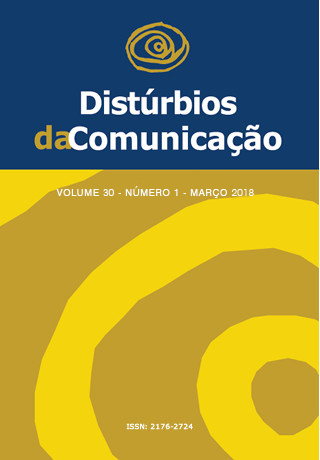Construcción de un instrumento para evaluar la comprensión del lenguaje oral en niños de 2 a 6 años
DOI:
https://doi.org/10.23925/2176-2724.2018v30i1p158-169Palabras clave:
Lenguaje infantil, Comprensión, Psicometría, Pruebas neuropsicológicas, Pruebas del lenguaje.Resumen
Objetivo: Describir la construcción de un instrumento para evaluar la comprensión del lenguaje oral en niños de 2 a 6 años y obtener evidencias de validez basadas en el contenido. Método: La pesquisa se consistió en: levantamiento y caracterización de instrumentos nacionales e internacionales destinados a la evaluación de la comprensión del lenguaje oral en niños; elaboración de un nuevo instrumento; y análisis del instrumento por cinco jueces. El análisis estadístico envolvió cálculo de porcentaje de concordancia, proporción de validez de contenido e índice de validez de contenido. Resultados: Fueran identificados 19 instrumentos que evalúan la comprensión del lenguaje oral, utilizando palabras aisladas, ordenes simples o complejas y textos. Posteriormente, fue elaborado un instrumento compuesto por ocho frases con ocho ítems cada. La tarea consiste en la manipulación de figuras por el niño según las órdenes del evaluador, con nivel creciente de dificultad. El análisis de los jueces indicó resultados satisfactorios en lo que se refiere a los índices calculados para el instrumento como un todo. Los ítems con índice insatisfactorio fueran revisados para componer la versión final del instrumento. Conclusión: El estudio describió la primera etapa del proceso de construcción del instrumento e fueran obtenidas evidencias de validez basadas en el contenido. Estudios posteriores serán conducidos para obtención de otras fuentes de evidencia de validez.Descargas
Descargas
Publicado
Número
Sección
Licencia
Derechos de autor 2018 Tassiana Barbeiro Fragoso de Sá, Ricardo Franco de Lima, Taís de Lima Ferreira Mattar, Sylvia Maria Ciasca

Esta obra está bajo una licencia internacional Creative Commons Atribución 4.0.









